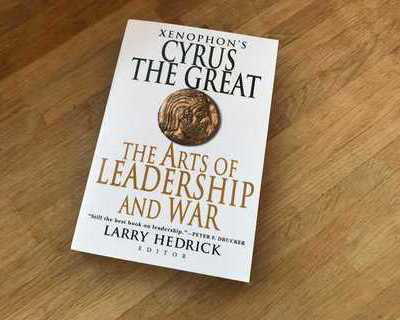Not in my experience. When I started my company I went through two startups within the same startup. One that failed (product 1) and one that succeeded (product 2). In both cases I found the product market fit. However for product 1, I lacked experience in executing and scaling up my business. When it came to product 2, I had many scars and learnings to apply, and second time around, it went brilliantly. There were still lessons to learn, but one difference which I want to explore here is the application of quarterly targets. I am now religious about them.

My business was B2B, selling enterprise software to telcos. The sales cycle was awful, 12 – 18 months was typical, sometimes more! That made predicting sales very difficult and it was a real challenge to set quarterly sales targets in such a brutal sector. When I was bringing product 1 to market, my VCs used to set my annual sales targets for me, and I used to take those, then fail to achieve them. This in itself is a huge topic one that we won’t address here; maybe a future blog I can tell you why it’s really bad for VCs to set your targets for you. Their input is key, but they shouldn’t impose them. I digress, but one of the reasons I became a VC is because I’ve seen it done badly and I want to make a step change in the way VCs are perceived by CEOs/founders.
So, when I was bringing product 2 to market, I set the targets with my team, not just for sales but everything else, too. We took these to the board to get their feedback and input, but I would no longer accept a number because it was an arbitrary 100% uplift on last year! This meant that my team and I really owned whatever we set; we felt it was our necks on the line. To contrast, with product 1 I would say to the sales guys: “This is our annual sales number and here is your comp plan and territory. Good luck!” For product 2. because the annual KPIs were derived from a detailed bottoms-up product, development, marketing, sales and operations plan that the team had helped me create, I already knew how to set the quarterly targets. This meant that not hitting the quarterly sales targets had a significant financial consequence for the sales team. It was amazing to see the change in behavior and the drive to hit that first quarter’s sales number.
In addition to financial rewards for your sales team, don’t forget most sales people have a large ego, and beyond money, they love public recognition. So don’t hold back, buy that expensive champagne for your best performer of the quarter who has blown her targets, and celebrate her achievement amongst her peers. If you have created the right sales DNA and growth culture in your organisation (subject for another blog), then you can create a healthy competition within your sales team, where every quarter they will strive to outshine their peers. Don’t forget that when collectively your sales team hits the company quarterly sales target, the year will take care of itself.
The same is true for other business targets, be it in support, product development or elsewhere, except you need to adapt your motivational tools to drive them. Engineers don’t respond to money, but they do respond to believing in a bigger vision and driving to get that product out to satisfy customers. So for example, put photos of your users on the walls using the product. This is a powerful and visual way for developers to relate to the users who are desperate for that next release. It’s much harder to disappoint someone when you know what they look like and how much they want your product to be delivered on time.
For me, this continuous and relentless drive to hit quarterly KPIs in all areas of the business became a critical success factor. Since adopting this way of running my company, I did not miss a single quarter or an annual target that I had committed to the board.
At Frog I am leading the development of a number of scaling methodologies combining my own experience with lessons learnt from other CEOs on best practice for different types of business. This ensures we can give CEOs the practical tools to maximize value in their company.













